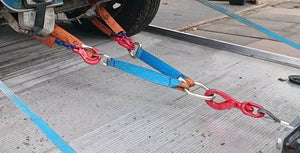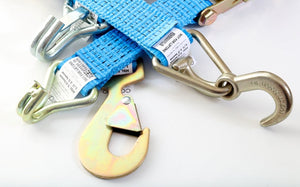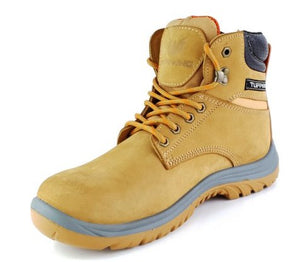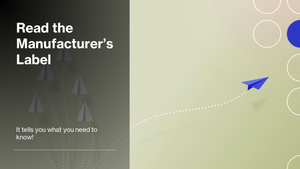Polyester Lifting Slings

The usefulness and versatility of polyester lifting slings make them an equipment 'must have' for the vehicle recovery, construction and salvage industries, to name but a few. But what do we really know about them? Hopefully you will learn more below.
Firstly, why are the slings made from polyester?
Well, polyester is a category of polymers that contain the ester functional group in their main chain, hence the name polyester.
It is a synthetic fibre, petroleum product with lightweight, durable, dry quickly, wrinkle resistant, abrasion resistant and strong as its main characteristics. So it is a perfect fit for a sling.
Lifting polyester slings all come labelled with the Working Load Limit in accordance with BS EN 1492-1:2000 + A1:2008 (flat slings), BS EN 1492-2:2000 (round slings) and a serial number which is relevant to the Certificate.
Lifting slings are available in simplex flat, duplex flat & endless round with a tonnage from 1 tonne to 20 tonnes subject to length and sling type. All slings are also certified & tested with a 7:1 safety factor.
However, please be aware, if a metal fitting(s), is attached to the looped end(s) the safety factor reduces to 5:1.
Polyester lifting slings come in a variety of different colours. This is important, as the colour of the sling dictates its lifting capacity in the various sling applications.
The chart below summaries this data.

This lifting load capacity of the sling will change if you alter the way it is slung from the standard vertical lift. The columns to the right hand side of the above chart indicate main type of sling configurations used and their respective capacities.
So, for example, if you have a GREEN colour sling, the vertical lift capacity is 2.0 tonne. If you adapt the sling into a 'Basket' sling, the lift capacity then becomes 4.0 tonne, and so on.

Full car lift using 90° basket slings x 2
Common Sling Applications

Choker Vertical Basket at 45° Basket at 90°
Vertical Lift
When a sling is used in a vertical hitch, the full lifting capacity of the sling material can be utilized.
Common uses include:
- Lifting a load vertically, such as positioning concrete blocks
Choker
Due to the stress created at the choke point, slings rigged with this hitch achieve only about 80% of their potential lifting capacity.
Always pull a choker hitch tight before a lift is made - never during the lift.
Common uses include:
- Loading or unloading building materials such as timber packs, scaffold poles, RSJ steels, etc
- Lifting steel tubes
Basket Lift - Sling Cradle at 90° (Vertical)
The cradle configuration of this hitch allows the two extending ends (legs) of the sling to function as if they were two separate slings. The capacity of the sling in this hitch is twice that of the same sling in a vertical hitch, but only if the sling angle of each leg is 90°
Common uses include:
- Lifting pallets loads of bricks, ballast,
- Full car lift
Basket lift - Sling Cradle at 45°
When slings or sling legs are used at an angle during a lift, the sling lifting capacity is reduced. How much it is reduced depends on the sling angle. For example, sling legs at 45°, the lifting capacity is 1.4 times the same sling in a vertical hitch.
Common uses include:
- Flat steel plate stacks
- Large frames
This is just a small cross section of uses for the sling, but hopefully, it emphasizes its adaptability. All of the above applications and uses can be carried out by the same sling, provided, of course, it doesn't go over its working load limit.
See the Cardno Lifting Slings range. Contact us if you could do with some more advice. We’re always happy to help.
- Cardno Sales Team






